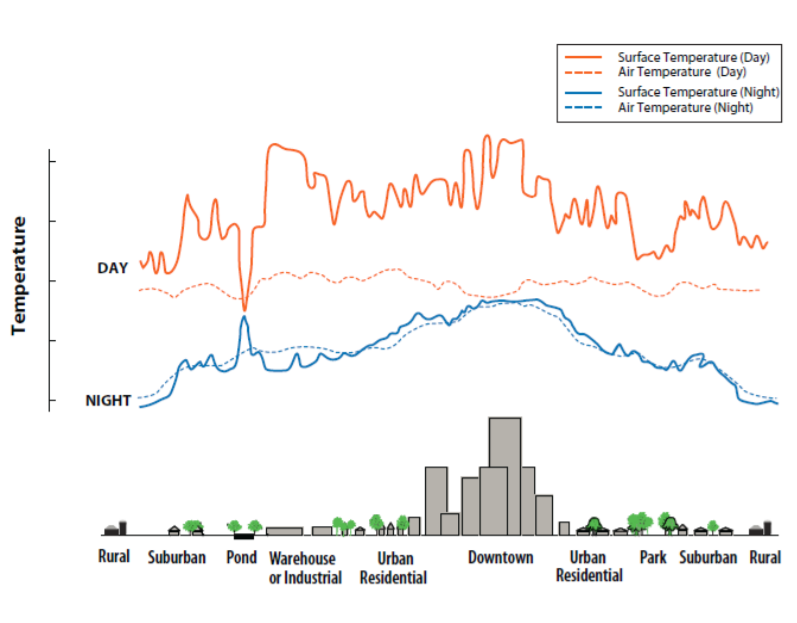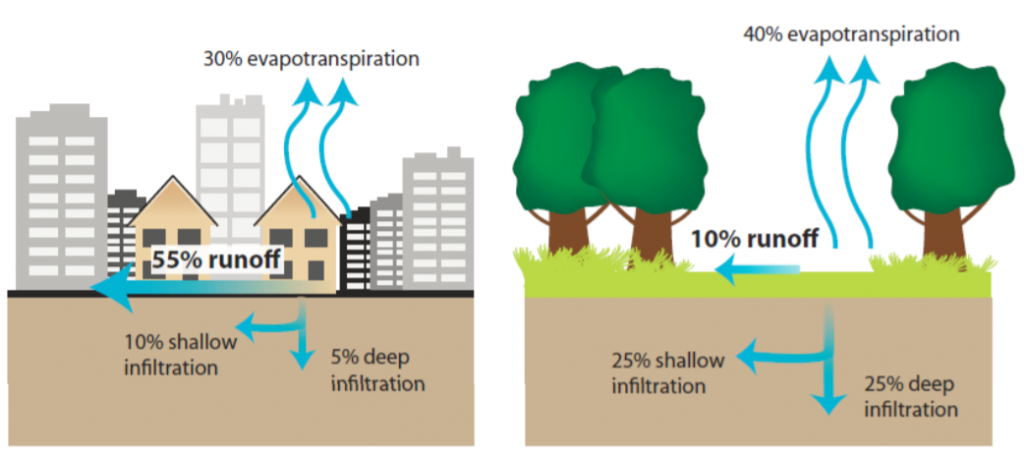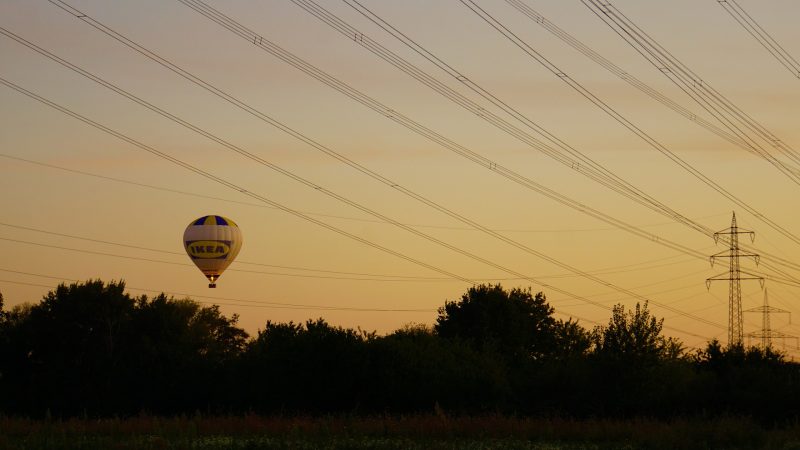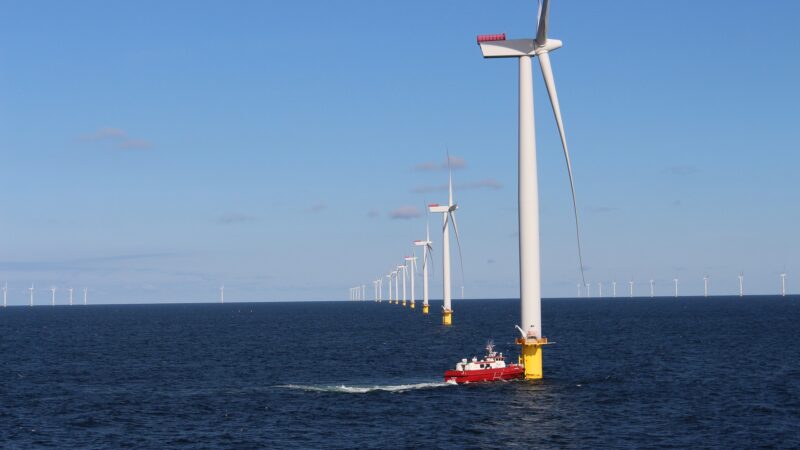Urban heat islands and green solutions5 min read

Global warming. Surely one of the phenomena that is most talked about in recent years. It is not a seasonal issue but refers to the whole year, where the average temperatures of the period exceed values considered acceptable.
But the closer we get to summer, the more the issue shifts to scorching heat, especially for those who stay in urban areas.
It is often discussed that temperatures are much higher in cities than in rural areas.
This phenomenon is called “urban heat island”. But first of all, let’s start by defining what it is.

Urban heat island: definition
According to the United States Environmental Protect Agency, the heat islands are “urbanized areas that experience higher temperatures than outlying areas. Structures such as buildings, roads, and other infrastructure absorb and re-emit the sun’s heat more than natural landscapes such as forests and water bodies. Urban areas, where these structures are highly concentrated and greenery is limited, become “islands” of higher temperatures relative to outlying areas. Daytime temperatures in urban areas are about 1–7°F higher than temperatures in outlying areas and nighttime temperatures are about 2-5°F higher“.

Green solutions
But what are the solutions that can mitigate this phenomenon and keep our cities cooler?
Also according to the United States Environmental Protect Agency, the strategies, and technology are following:
- Trees and Vegetation – Increasing tree and vegetation cover lowers surface and air temperatures by providing shade and cooling through evapotranspiration. Trees and vegetation can also reduce stormwater runoff and protect against erosion.
- Green Roofs – Growing a vegetative layer (plants, shrubs, grasses, and/or trees) on a rooftop reduces temperatures of the roof surface and the surrounding air and improves stormwater management. Also called “rooftop gardens” or “eco-roofs”, green roofs achieve these benefits by providing shade and removing heat from the air through evapotranspiration.
- Cool Roofs – Installing a cool roof – one made of materials or coatings that significantly reflect sunlight and heat away from a building – reduces roof temperatures, increases the comfort of occupants, and lowers energy demand.
- Cool Pavements – Using paving materials on sidewalks, parking lots, and streets that remain cooler than conventional pavements (by reflecting more solar energy and enhancing water evaporation) not only cools the pavement surface and surrounding air but can also reduce stormwater runoff and improve nighttime visibility.
- Smart Growth – These practices cover a range of development and conservation strategies that help protect the natural environment and at the same time make our communities more attractive, economically stronger, and more livable.
Some real-life examples
Vía Verde Vertical Gardens in Mexico City. We have already covered the subject, focusing on the anti-pollution benefits of the solution (read the article). The Vía Verde project has set itself the goal of transforming the gray of the Mexican city into green through the construction of vertical gardens on the pillars along the peripheral highway, which surrounds the central city.

White paint in Los Angeles. In California, in order to reduce mainly greenhouse gas emissions, it was decided to paint the streets white with “Cool Seal”, a water-based covering pigment capable of binding to the asphalt. In this way, it is possible to send the sun’s rays back into the atmosphere without transforming them into heat.

Roof gardens in Malaysia. The detection of the temperatures in Putrajaya (91,900 inhabitants) has revealed that this town is 5°C hotter than other local cities, joining the ranks of metropolises such as Kuala Lumpur (1,8 million inhabitants), Penang (1,6 million inhabitants), and Johor Baru (503,000 inhabitants). One solution to counter the heat was the installation of gardens above the roofs of the buildings. One of the best local examples of an extensive green roof is the Heriot-Watt University Malaysia building in Putrajaya.

Urban forest in Melbourne. The Melbourne Urban Forest Strategy seeks to manage challenges like climate change, population growth, and urban heating. According to the City of Melbourne website, “a healthy urban forest will play a critical role in maintaining the health and liveability of Melbourne. Our Urban Forest Strategy seeks to manage this change and protect against future vulnerability by providing a robust strategic framework for the evolution and longevity of Melbourne’s urban forest“.

These are just some of the real-life examples of how cities are coping with the scorching heat. But we are confident that other technological evolution will help even more to manage (in a green way) these issues, given also the global increase of the urban population compared to rural areas.
Source: United States Environmental Protect Agency
Featured image by Gerd Altmann from Pixabay






